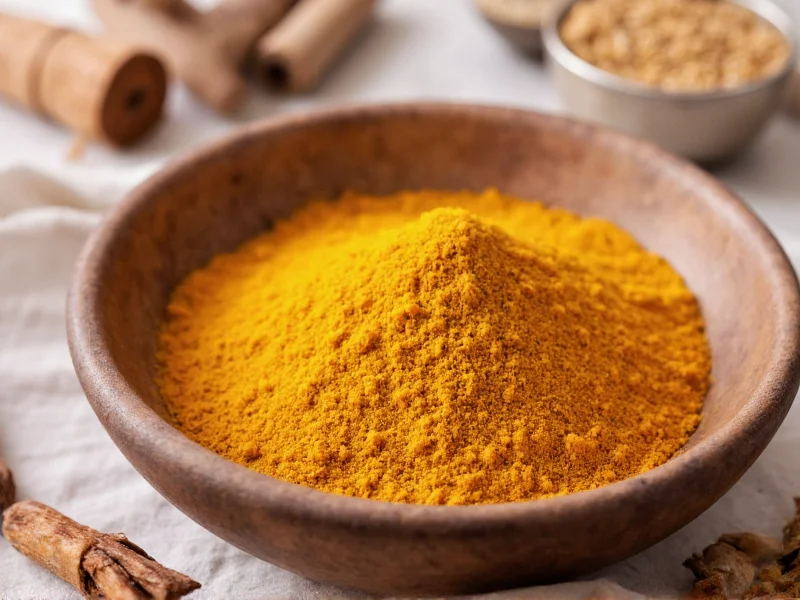The best immediate substitute for curry spice is a blend of 1 teaspoon ground cumin, 1 teaspoon ground coriander, 1/2 teaspoon turmeric, 1/4 teaspoon ginger, and a pinch of cayenne pepper. For ready-made alternatives, garam masala with added turmeric works well for Indian-style curries, while Chinese five-spice powder can substitute in some recipes.
When you're in the middle of cooking and realize you're out of curry powder, knowing reliable substitutes can save your meal. Curry spice blends vary significantly by region and recipe, which means the ideal substitute depends on what type of curry you're preparing and what ingredients you have available in your pantry.
Understanding Curry Spice Composition
Curry powder isn't a single standardized blend but rather a mixture of spices that varies by region and manufacturer. Most Western-style curry powders typically contain:- Turmeric (provides the yellow color)
- Cumin
- Coriander
- Fenugreek
- Ginger
- Mustard seeds
- Chili peppers
- Cardamom
- Cinnamon
- Black pepper
Best All-Purpose Curry Powder Substitutes
When you need a quick curry spice replacement that works for most Western-style recipes, these options deliver the closest flavor profile:Homemade Blend Recipe
Create this versatile substitute by mixing:- 1 teaspoon ground cumin
- 1 teaspoon ground coriander
- 1/2 teaspoon turmeric
- 1/4 teaspoon ground ginger
- 1/8 teaspoon black pepper
- 1/8 teaspoon cinnamon
- Pinch of cayenne pepper (optional for heat)
Garam Masala Alternative
If you have garam masala in your spice collection, it makes an excellent base for a curry powder substitute. Mix:- 1 tablespoon garam masala
- 1/2 teaspoon turmeric
- 1/4 teaspoon paprika or cayenne (for color and heat)
Substitutes by Curry Type
Not all curries are created equal, and the best substitute for curry spice depends on which regional cuisine you're preparing.Indian Curry Substitutes
For authentic Indian dishes, commercial curry powder often falls short anyway. Instead, build flavor from individual spices:- For mild curries: Use equal parts cumin, coriander, and turmeric
- For richer curries: Add 1/4 teaspoon each of cardamom and cloves to the basic blend
- For restaurant-style flavor: Sauté 1 teaspoon each of cumin seeds and mustard seeds before adding your spice blend
Thai Curry Paste Alternatives
Thai curries use curry paste rather than dry powder, making substitution more complex. For red curry paste substitute:- 1 tablespoon tomato paste
- 1 teaspoon paprika
- 1/2 teaspoon each cumin and coriander
- 1 minced garlic clove
- 1/4 teaspoon lemongrass (dried or fresh)
- Pinch of cayenne
Pantry Staples Substitution Guide
| Available Spice | Substitute Ratio | Best For | Flavor Notes |
|---|---|---|---|
| Garam Masala + Turmeric | 1:1 + 1/2 tsp turmeric per Tbsp | Indian curries | Warmer, less earthy than curry powder |
| Chinese Five-Spice | 3/4:1 ratio | Non-traditional applications | Sweeter, more anise flavor |
| Berberé Spice Blend | 1:1 | African-inspired dishes | Hotter, more complex heat profile |
| Individual Spices Blend | Custom ratio | All curry types | Most authentic control over flavor |
| Colombo Powder | 1:1 | Caribbean recipes | Milder, with more fenugreek |
Special Dietary Considerations
When seeking a substitute for curry spice due to dietary restrictions, consider these alternatives:- For turmeric allergy: Omit turmeric and increase paprika for color. The blend will lack some earthiness but maintains curry-like flavor.
- For low-sodium diets: Most commercial curry powders contain no added salt, but check labels. Homemade blends give you complete control over ingredients.
- For gluten concerns: Pure spice blends are naturally gluten-free, but verify commercial products for potential cross-contamination if you have celiac disease.
When Substitutions Won't Work
While good substitutes exist for most curry powder applications, some situations require authentic ingredients:- Traditional Indian dishes: Many authentic recipes don't use curry powder at all but build flavor from individual spices. In these cases, a curry powder substitute misses the point of the recipe.
- Thai curry pastes: The fresh ingredients in Thai curry pastes (lemongrass, galangal, kaffir lime) can't be fully replicated with dry spices.
- Specific regional curries: Japanese curry roux has a distinctive sweet, thick texture that dry spice substitutes can't replicate.











 浙公网安备
33010002000092号
浙公网安备
33010002000092号 浙B2-20120091-4
浙B2-20120091-4